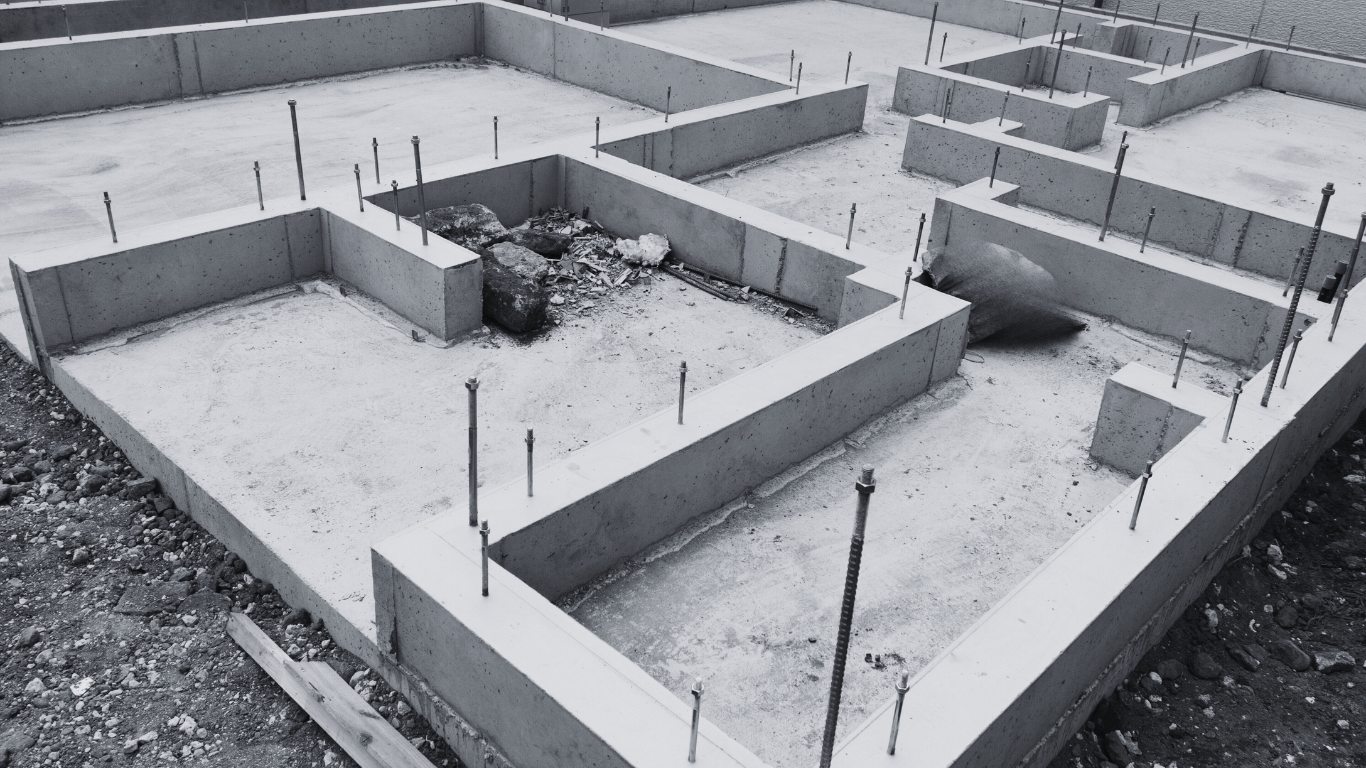Foundations
“It’s is not the the beauty of a building you should look at it’s the construction of the foundation that will stand the test of time”
David Allan Cloe
Establishing a solid foundation is fundamentally important for the success off any construction project. To achieve project success, it is paramount to understand and master the fundamentals of foundation. In this article, we will delve into key aspects, unveiling essential steps to create sturdy and enduring foundations.
Why is foundation important?
Foundations support a structure by acting as the cornerstone, bearing the entire weight of the building and effectively transferring loads to the soil or rock below. Moreover, through the even distribution of weight, foundations prevent settling, thereby providing protection against potential structural damage. Additionally, a well-constructed foundation contributes to the durability of a building, enabling it to withstand environmental forces, live loads, and other stresses.
Foundations and connection to a structure
The connection between a foundation and a structure is frequently regarded as the bridge linking the below-ground foundation and the above-ground superstructure. Consequently, this connection necessitates meticulous consideration and precision in construction.
The connection involves the incorporation of bolts or steel rods that extend outward from the foundation and establish a link with the overlying structure. Once the foundation is finished, with careful placement of steel rods sticking out, the next step is to start building the actual structure.
The foundation is designed to fit the specific needs of the building, taking into account the size, type of structure and the kind of construction planned. The materials used for building the foundation can be different, including strong ones like steel and concrete, or more traditional ones like stones or bricks. The choice depends on what works well with the building and the type of soil at the construction site.
After carefully planning and choosing the right foundation type, construction materials, and understanding the soil conditions, the building project can start. This careful approach makes sure that the connection between the foundation and substructure is strong and customised for the specific needs of the building, ensuring a strong and long-lasting construction process.
Foundations and structures should be designed according to the following:
Know your soil :
Conducting a thorough soil analysis is crucial because various soil types have different load-bearing capacities. By understanding these differences in soil types, one can better determine the foundation design.
Choose the Right Foundation Type:
Each type of foundation serves a specific purpose. Therefore, it is important to examine the advantages and disadvanatages of each type of foundation to make an informed decision based on the project’s requirements, local climate, and soil composition.
Invest in Quality Materials:
The strength of any foundation lies in the quality of materials used. The contractor must choose durable, high-quality concrete with the right steel bars. If they put cost before quality, it might make the structure less stable, so it is important to focus on quality even if it costs a bit more.
Follow Local Building Codes:
Contractors must be familiar with building codes to ensure safety and compliance with structural standards. These codes plays a crucial role in specifying requirements for foundations. Consequently, thorough understanding of building codes not only assures the structural soundness of the project but also mitigates the risk of legal complications in the future.
Proper Site Preparation:
Prepare the construction site by clearing debris, plants, and potential obstructions before starting the foundation work. Ensure the ground is flat and even to prevent any irregular settling.
Effective Water Management:
To maintain a strong foundation, it is crucial to prevent water accumulation in its vicinity. Effective water management involves ensuring the ground slopes away from the foundation, installing gutters, and establishing proper drainage paths. These measures collectively help prevent water buildup, mitigate erosion, and consequently reduce the risk of damage to the foundation.
Building a strong foundation in construction involves gaining knowledge, getting ready, and paying close attention to details. By knowing the specific features of the construction site, picking the right materials, and following good practices, foundations can last a long time. Whether it’s a house, a business building, or any structure, a sturdy foundation is crucial for a successful and long-lasting project.
